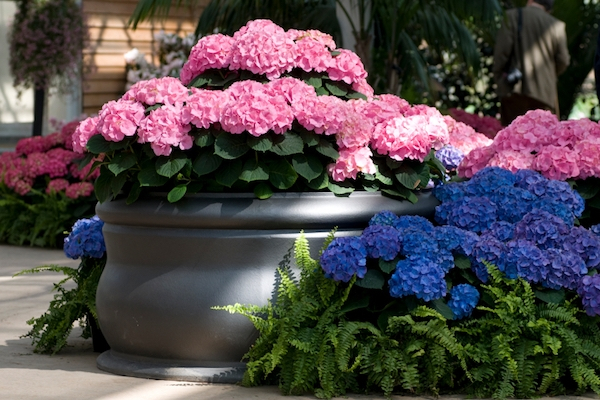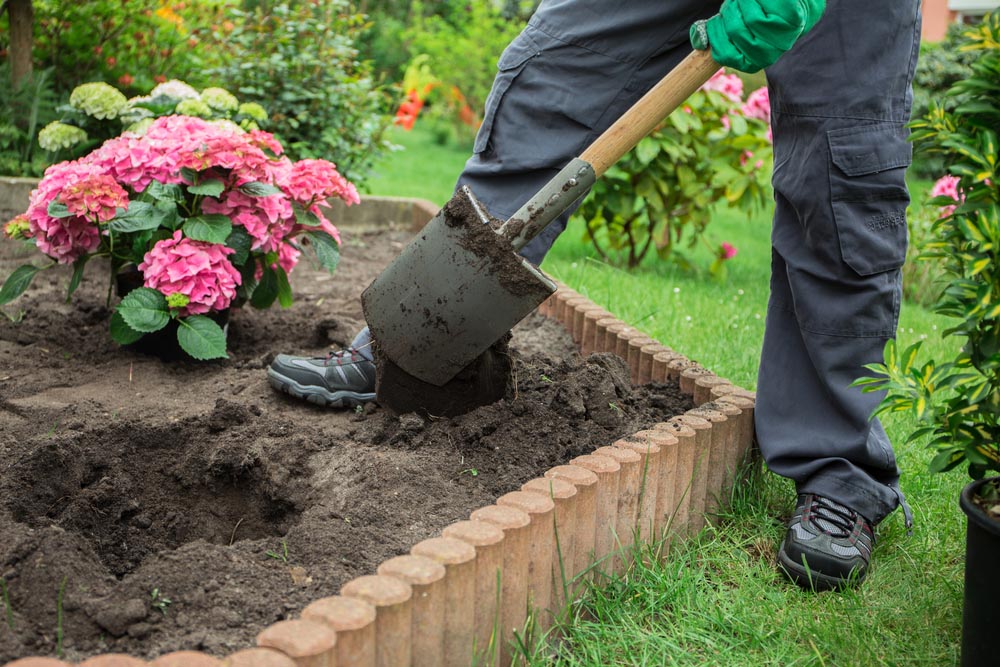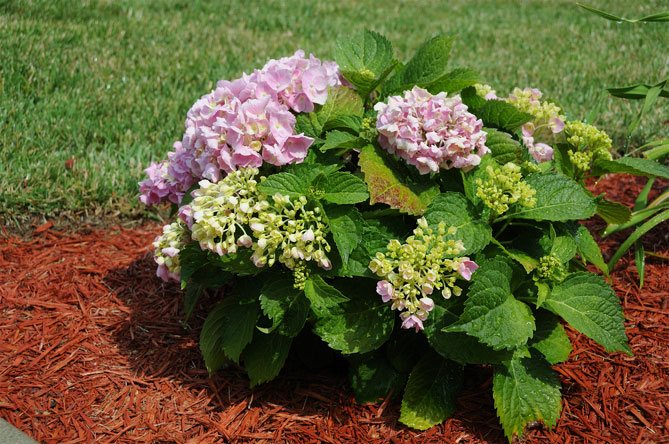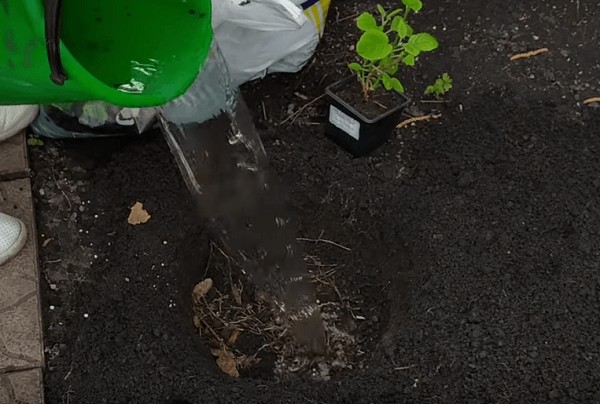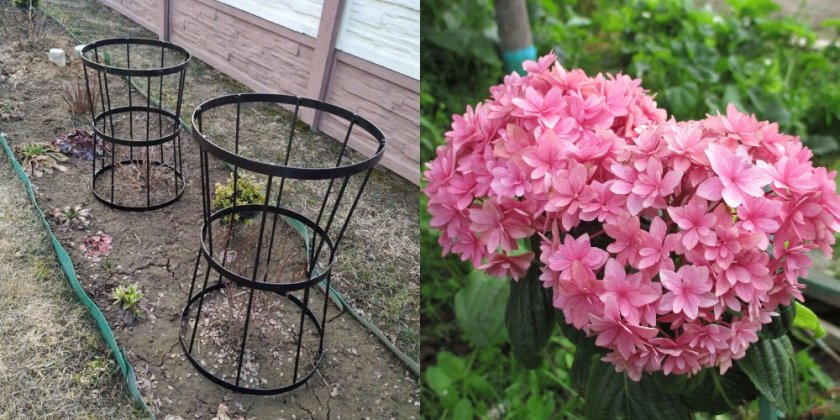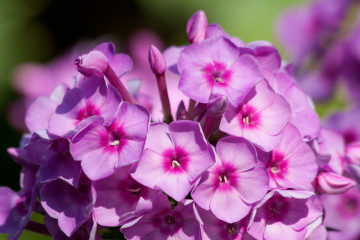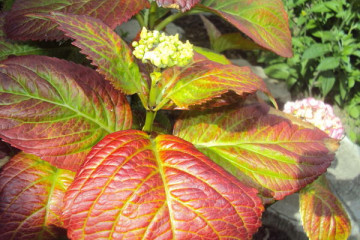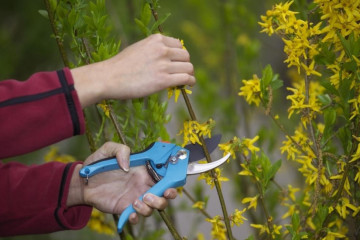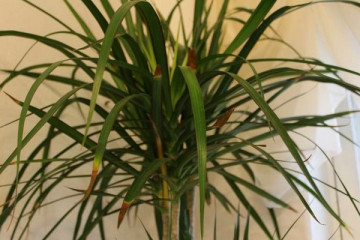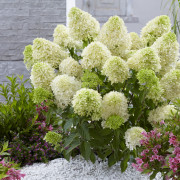Transplanting hydrangeas from one place to another - when and how to do it
Content:
To maintain the freshness and splendor of ornamental shrubs, it is important to transplant in a timely manner. Hydrangea (or hydrangia) is a delicate and demanding flower, the soil for it is prepared in advance. You should carefully choose the moment for a successful plant transplant.
What is a hydrangea transplant for?
A hydrangea transplant is necessary in several cases:
- for reproduction of overgrown shrubs;
- to rejuvenate an old plant;
- when organizing landscape design;
- when the plant has taken root poorly in its old place and does not develop;
- when the surrounding greenery takes moisture and nutrients from the bush;
- the flower has become cramped in the previous bed or in the pot.
If the bush has stopped developing, has worsened or stopped flowering, it is worth moving the hydrangea to a more comfortable place. Various factors affect the quality of flower development:
- composition and moisture content of the soil;
- lighting features;
- the presence of buildings and vegetation in the immediate vicinity of the hydrangea.
When is it better to transplant hydrangea
Before starting a "relocation", it is necessary to calculate the appropriate time, since the place is prepared in advance, and after the transfer, the flower is allowed to take root. When it is possible to transplant a hydrangea from one place to another, it becomes clear by natural signs: the absence of awakened buds and flowers, suitable weather, the onset of a dormant period. When to transplant hydrangea and at what time?
In the spring
When the frosts have completely receded, and the soil has warmed up well, they begin to transplant the shrub. It is important to have time to do everything before the active formation of the kidneys begins. Spontaneous replanting will be stressful and can negatively affect the health of the bush. In the Moscow region and the regions of the middle zone, such a period falls on the end of March - the first ten days of April, in cold regions they wait for May.
In summer: transplanting a flowering plant
Transplanting a flowering plant in June and July is not the best option for hydrangeas, as it is for most other garden shrubs. When the bush gives all its strength to flowering, it is impossible to disturb the root system, otherwise the hydrangea may stop laying buds for several years in advance, perceiving the created conditions as extremely unfavorable.
Whether it is possible to transplant a non-flowering hydrangea in June is a debatable question. It is not recommended to transplant home flowers into a new flowerpot in the summer, except when it comes to saving a dying plant.
In autumn
Autumn is called the most favorable period for the "resettlement" of the bush. It is carried out after the heat has receded and flowering is complete. During this period, the plant accumulates nutrients in the roots and forms new flower buds.According to the calendar, such days fall in mid-September for the middle lane. In Siberia and the Urals, hydrangeas are rooting in a new place at the end of August.
The advantage of the autumn movement is that the shrub forms new root shoots, does not dissolve young ground stems. It is prepared for winter and in the spring the plant will awaken with full vigor. The most important thing is not to damage the formed buds, so as not to suspend the formation of buds.
How to properly transplant a garden hydrangea
A large-leaved garden shrub loves intense watering and moderate lighting. The plant grows best on acidified loamy soils away from massive trees and buildings.
How to choose a seat
Paniculate bushes are sensitive to space and temperature:
- Hydrangea is not planted close to the walls of buildings - in winter, the proximity of stones can lead to hypothermia of the root system.
- It's good to have a place on the east side. Hydrangea loves the soft sun, but does not tolerate the baking heat. Under the zenith rays, the bushes can stop blooming and thin out. The best option is to grow in partial shade.
- Treelike and lush flowering bushes should not be placed near large trees and other decorative plantings. Plants should not fight for moisture and nutrient components of the soil.
- The bed is not placed in a low-lying area where there is a risk of flooding.
Pit and soil preparation
A place for a hydrangea transplant is prepared in advance, 2-3 months before the "relocation". The soil is well nourished and equalizes the pH. Depending on the variety, the soil is acidified with coniferous fertilizer and iron-containing preparations. Another important point is drainage. It is essential in rainy regions. In the Leningrad region, even the most resistant bushes will not survive without removing excess moisture.
The right mix of nutrients is considered to be a mix of equal parts peat, humus, leafy soil and river sand. The composition must include:
- superphosphate - 0.6 g;
- potassium - 0.2 g;
- urea - 0.2 g;
- humus - 0.1 g
A hole is prepared for hydrangea from 40 cm in diameter - depending on the size of the bush. Deep down - about the same. The entire volume is filled with a nutrient mixture. The day before transplanting, the bed is well moistened and the liquid is allowed to be absorbed.
For planting a bush up to 3 years old, a half-meter hole is organized, for 5-year-old plants - a meter, and for more mature specimens - a half meter. This will allow shrubs to fully develop in the future.
Plant preparation: reproduction or relocation
There are two options for transplanting a garden bush: carefully transferring a developed plant along with an earthen clod, or dividing a dense root system. For maximum comfort and quick rooting, the bush is not divided, but retained its natural shape and microflora in the root zone.
Before the procedure, the twigs are cleaned of dry debris and collected under a tourniquet so that they do not disintegrate. The adhering soil is not upholstered or washed - this will reduce transplant stress. If work is carried out with young plants, it is advisable to give preference not to open germination, but to the nutrient chamber.
Direct transplant
The bush should be immersed in the ground, burying the roots at the level of the soil - it should not be buried in the ground or stand out as a hill.The plant, together with the "native" earthy lump, is moved into the prepared hole, the lumen is filled with nutritious soil, watered generously, but not tamped. 1 bush, depending on its size, will take 1-4 buckets of water.
Features of transplanting room hydrangea from pot to pot
Before transplanting the hydrangea into a more spacious pot, they are stocked with a nutrient mixture. Old soil is removed only if it is contaminated or infected. In other cases, the dug out flower, along with the usual clod of earth, is placed in a new container and filled with high-quality soil with an acidic or neutral reaction.
Caring for a transplanted hydrangea
When a bush is moved to a new location, it needs regular watering to accelerate the formation of new root shoots. In hot weather, the soil is moistened every other day, in the cool season - according to the state of the top layer.
A weakened plant may need support, especially in the fall when strong winds come. A small cage becomes an effective defense, but simple pegs can also come up, which will prevent the bush from falling on its side or emerging from the loose earth before rooting.
You cannot overfeed the flower. When transplanting hydrangeas in the spring to another enriched place, more fertilizer is not required. The root areas are covered with soft sawdust mulch, but they do not allow the liquid to stagnate in their thickness.
Indoor bushes are generously watered, kept in the light, with poor acceptance, they are tied up. Delicate transplantation and proper care of this amazing garden shrub gives you the opportunity to admire its bright color every year.
